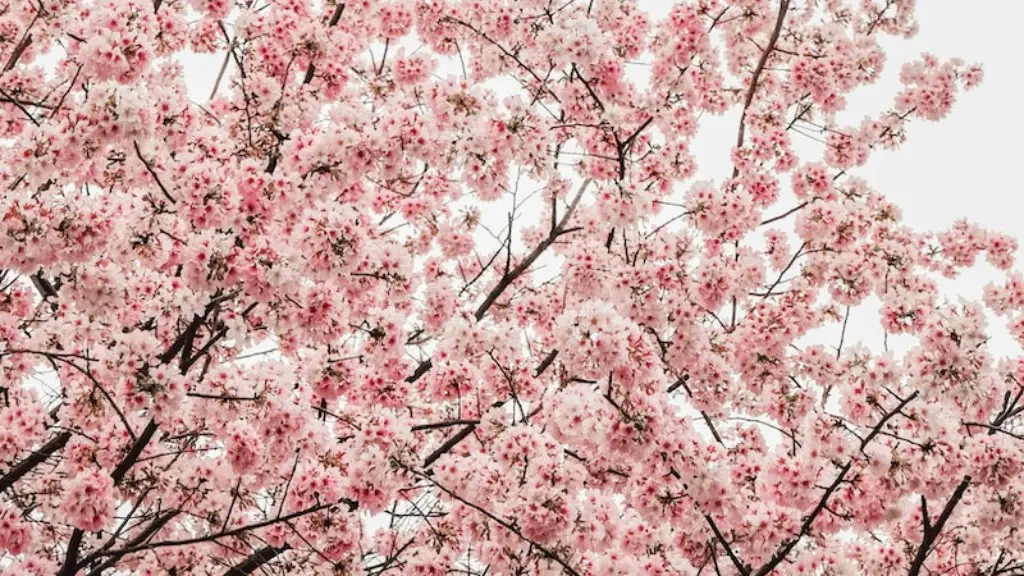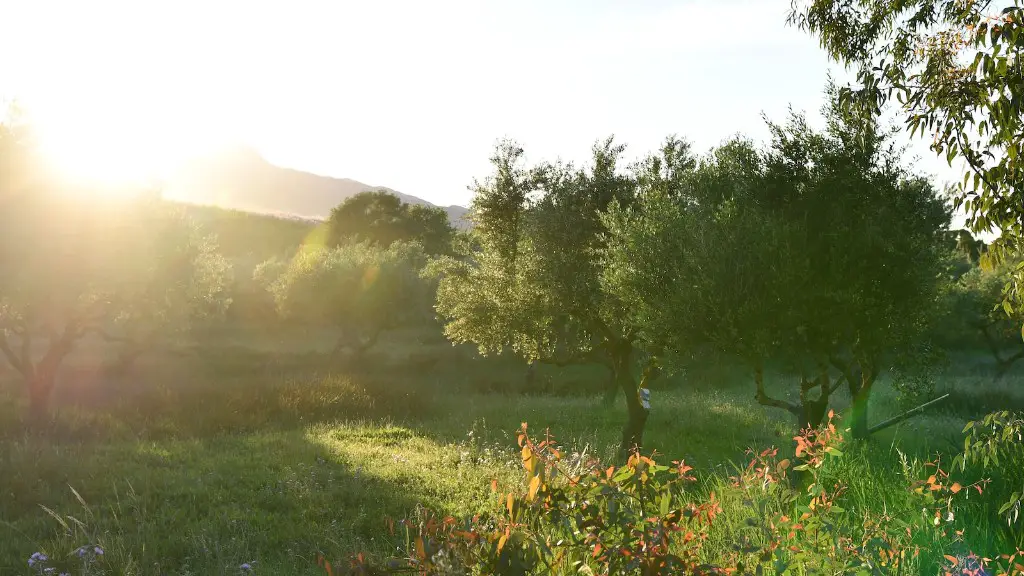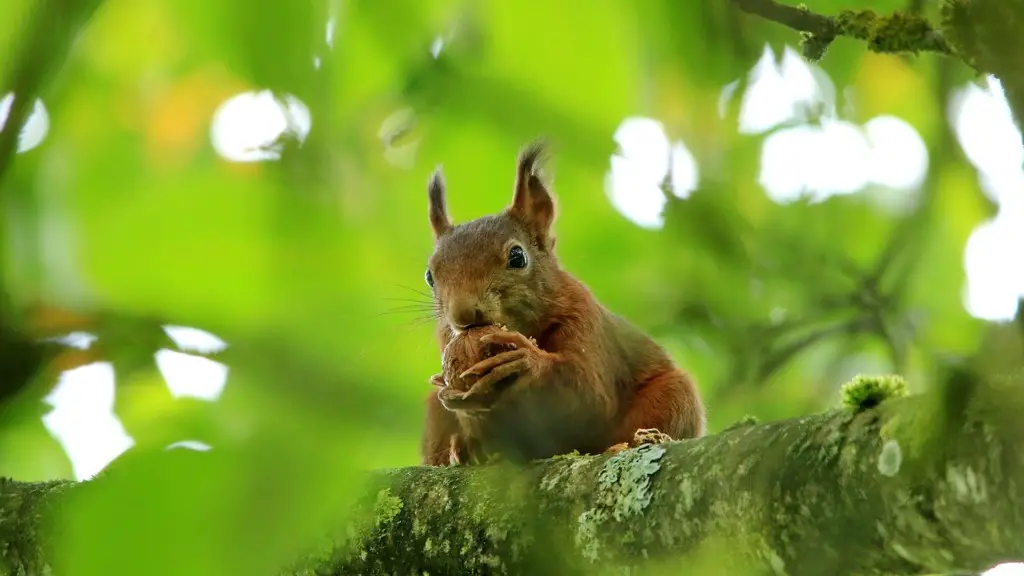Growing a cherry tree from seed requires a basic understanding of the cultivation process and patience. Although it is possible to grow a cherry tree indoors from seed, it is a long and involved process that has many different steps. The first and most important step is to prepare the seed for planting. Once the seed is ready, planting, tending and harvesting the cherry tree need to be done properly in order to ensure a healthy and productive tree.
Cherry tree seeds can be tough to start, so it is important to crack the seed coat and remove any tissue that may be inside. This process, known as scarification, should be done before planting the seed. To do this, soak the seed in a bucket of warm water for 24 hours, then take a pair of pliers and press the side of the seed against the teeth of the pliers. Do this in a firm, even pressure, since pressing firmly will lead to a larger crack in the seed coat.
Once the cherry tree seed is prepared, it’s time to plant it. Choose a container with good drainage and fill with a soil mix made up of equal parts potting soil, compost, and sand. Place the seed in the soil about 1 inch deep and lightly cover with sand. Fill the container with water, making sure the soil is saturated. This will help the seed to soak up the moisture and begin the sprouting process.
Now it’s time to wait for the seed to grow. Place the container inside a warm room close to a window that receives at least three hours of direct sunlight each day. Water the seed regularly, but be careful not to allow the soil to become too wet. The soil should remain damp, but not soggy. In the coming weeks, the seed should begin to sprout and the cherry tree will begin to grow.
Once the cherry tree has grown to a few inches tall, it will need to be pruned and trained. Pruning should be done when the tree is still young and pliable, since it’s easier to train a young tree. Begin by removing any dead or weak branches, then tie the healthy branches up with string or wire to help shape the tree. Make sure that the tree does not become too top-heavy, since this can lead to the branch breaking.
Once the cherry tree is established, it will need to be fertilized regularly. Fertilizing helps the tree to reach its full potential and produce healthy, juicy fruit. A basic fertilizer that is high in nitrogen, phosphorus, and potassium should be used. Apply the fertilizer according to the package instructions and water the tree thoroughly after fertilizing.
The cherry tree will need to be monitored closely throughout the entire growth process. When the tree is young, the soil should be checked regularly to make sure it has enough moisture. Pruning should be done regularly and the tree should be fed with a balanced fertilizer each season. Harvesting the cherries is the final step in the process. Waiting for the cherry tree to produce fruit can often take two years or more, so patience is key when starting a cherry tree from seed.
Evaluating Soil and The Roots of Your Cherry Tree
Evaluating the soil before planting your cherry tree is important for long-term success of your tree. Adding amendments like peat moss, gravel or perlite helps the soil drain properly which will keep your tree from getting root rot. Not only is the quality of soil important, but the proper evaluation of the roots of the tree is vital for its health. Gently remove the soil from the roots to inspect and identify any signs of weaknesses in the root structure.
A healthy root system should look like a fine web, allowing fibrous feeder roots to reach out corners and absorb more nutrients and water. These small roots reach down several inches and support the larger, stronger root structure. If a cherry tree’s roots are weak, it will be unable to get the water and food it needs, leading to poor growth, or worse, death for the tree.
If, upon evaluation, you find that all the roots are intact and have a healthy appearance, then you’re in luck. However, if the roots need some TLC, it’s possible to take the necessary steps to restore a weak root structure. Prune out any damaged roots and trim off the ends of long roots, making sure to balance out multiple root pruning with multiple root trims. This allows the cherry tree to remain properly balanced in the soil.
If the damage to the roots is severe it may be best to replant the cherry tree in a new container with fresh soil and amendments. This isn’t a decision that should be made lightly, since it can be difficult to transplant a large tree. If this is the decision you’ve made, make sure to provide plenty of support to the tree and check on the roots regularly to ensure they are taking to the new soil.
Transplanting & Siting Your Cherry Tree
Once your cherry tree is established and thriving, it may be time to transplant it outdoors. Before making the switch, it’s important to properly prepare the site where the tree will be planted. The ideal spot for a cherry tree is an area where it will will get at least 6-8 hours of sunshine each day and that has drainage that is neither too wet nor too dry.
Before transplanting, make sure to dig a hole that is about twice the size of the cherry tree’s container and add a layer of mulch to the bottom of the hole. This will help to keep moisture in the soil and provide the tree with extra nutrients. Gently remove the cherry tree from its container and place it in the hole, making sure to fill in any gaps with soil. Don’t forget to add a layer of mulch to the top of the soil as well.
Cherry trees should be transplanted when they are dormant, which will typically happen in the late winter or early spring. This gives the tree time to adjust to the new environment before the hot summer weather sets in. Once the tree is transplanted, it’s important to water it regularly for the first few months and keep an eye out for signs of stress. If the cherry tree does not take to its new home, it may need to be transplanted again or taken back inside.
Caring For Your Cherry Tree Year-Round
Once your cherry tree is established and thriving, there are a few simple steps you can take to ensure it remains healthy for years to come. One of the most important things to do is to water the tree regularly, especially during the drier months of the year. Deep watering can help promote healthy root growth and discourage pests and diseases. Additionally, it’s important to fertilize your cherry tree. A basic 10-10-10 fertilizer should be used once a year during the springtime when the tree begins to bloom.
Trimming and pruning should also be done regularly. Pruning the cherry tree can help keep it in shape and reduce the risk of disease. When pruning, avoid cutting more than one-third of the tree’s branches, since this could be stressful for the tree. Additionally, prune out any dead or broken branches and avoid pruning when the tree is in a weakened state.
Finally, make sure to mulch around the base of the tree. Mulch helps to retain water in the soil and discourages weeds. A layer of mulch should be applied once a year in the spring or fall. Make sure to keep the mulch at least three inches away from the trunk of the tree to avoid “mulch volcanoes” and onslaughts of bark damaging pests.
Harvesting Your Cherries
When the cherry blossoms have faded and the fruit is ripe, it is time to harvest your cherries. When harvesting cherries, it is important to be gentle and take care not to damage the tree. Gently pick the cherries off the tree by and lightly tapping the cherries off the branches with your fingers or a fruit picker. Make sure to pick in the early morning when the cherries are fully ripe and take care not to pull on the branches.
Once the cherries are harvested, it is important to sort them and discard any that may be blemished or rotten. Overripe fruit can be quickly and easily frozen at this stage and saved for later use. Gently place the cherries in a paper bag or a single layer of plastic bags and place them in a cool, dark place to help keep their freshness and flavor. If properly stored, your cherries should last several weeks.
Enjoying the Fruits of Your Labor
Once you’ve successfully grown your cherry tree and harvested its sweet fruit, it’s time to enjoy all your hard work! Cherries are a great source of dietary fiber and contain powerful antioxidants, making them an excellent addition to any diet. Eating them fresh is the best way to enjoy their sweetness, but if you’d like to preserve the fruit, turning them into jams and jellies is a great way to keep them for a longer time. Additionally, cherries can also be frozen, canned, dried or juiced.
No matter how you choose to enjoy them, cherries are a fun and delicious treat that can be enjoyed all year round. With a bit of patience and diligence, it’s possible to start and grow a cherry tree from seed and enjoy the sweet fruit of your labor!




